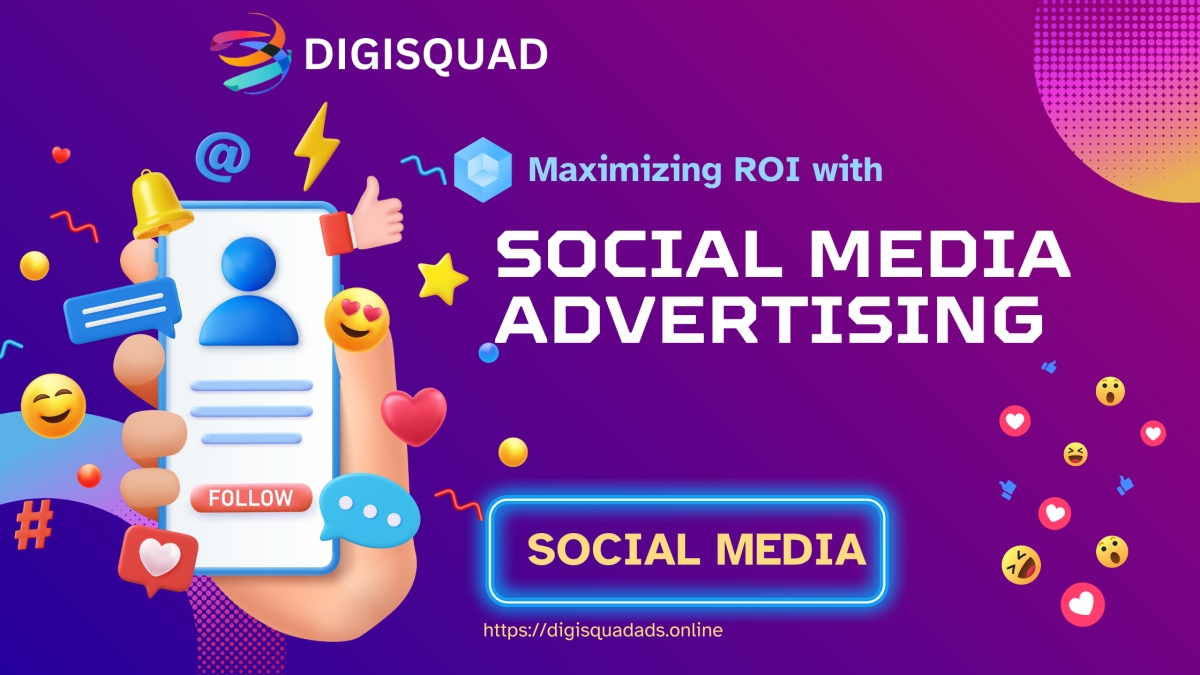Understanding Social Media Advertising
In the modern marketing landscape, social media advertising has emerged as a powerful tool for businesses to reach and engage their target audience. Understanding the fundamentals of social media advertising is crucial for maximizing return on investment (ROI).
1. The Evolution of Social Media Advertising
Social media advertising has evolved significantly since its inception. Initially used primarily for brand awareness, it has now become a sophisticated platform for driving conversions and generating revenue.
2. Benefits of Social Media Advertising
Social media advertising offers several advantages for businesses, including precise targeting options, cost-effectiveness, real-time performance tracking, and the ability to engage with a diverse audience across various platforms.
3. Setting Clear Objectives
To maximize ROI with social media advertising, it’s essential to establish clear and specific objectives. These objectives could include increasing website traffic, generating leads, boosting sales, or improving brand awareness.
4. Defining Key Performance Indicators (KPIs)
Aligning objectives with measurable KPIs is essential for tracking the success of social media advertising campaigns. Common KPIs include click-through rate (CTR), conversion rate, return on ad spend (ROAS), and cost per acquisition (CPA).
5. SMART Goals
Setting SMART (Specific, Measurable, Achievable, Relevant, Time-bound) goals ensures that objectives are well-defined and achievable. This approach provides clarity and accountability throughout the advertising campaign.
6. Choosing the Right Social Media Platforms
Not all social media platforms are created equal, and each has its unique audience demographics, features, and advertising options. Selecting the right platforms based on your target audience and advertising goals is crucial for maximizing ROI.
7. Audience Analysis
Conducting thorough audience research helps identify the social media platforms where your target audience is most active. Understanding their demographics, interests, and online behavior enables more effective targeting and messaging.
8. Platform-Specific Considerations
Different social media platforms offer distinct advertising formats and targeting options. For example, Facebook provides detailed demographic targeting, while Instagram emphasizes visual content. Tailoring your strategy to each platform is essential for success.
9. Crafting Compelling Advertisements
The effectiveness of meta-advertising campaigns hinges on the quality and relevance of the advertisements. Crafting compelling ad creatives that resonate with your target audience is essential for driving engagement and conversions.
10. Visual Content
High-quality visuals are critical for capturing the audience’s attention and conveying your brand message effectively. Utilizing eye-catching images, videos, and graphics can significantly enhance the performance of social media ads.
11. Persuasive Copywriting
Crafting persuasive ad copy that speaks directly to your target audience’s needs and interests is essential for driving action. Utilize compelling headlines, concise messaging, and clear calls to action to encourage engagement and conversions.
12. Implementing Targeted Advertising Strategies
Targeted advertising allows businesses to reach specific segments of their audience with tailored messaging. Implementing targeted advertising strategies based on audience demographics, interests, and behaviors can significantly improve campaign performance and ROI.
13. Demographic Targeting
Demographic targeting enables advertisers to reach audiences based on factors such as age, gender, location, and income level. Understanding your target demographic allows for more precise ad delivery and improved relevance.
14. Interest-Based Targeting
Interest-based targeting involves reaching audiences who have expressed interest in topics related to your products or services. Leveraging insights from social media platforms’ data enables advertisers to target users based on their interests and preferences.
15. Behavioral Targeting
Behavioral targeting focuses on reaching audiences based on their past behaviors and interactions on social media platforms. This includes factors such as website visits, app usage, and engagement with previous ads.
16. Monitoring and Optimizing Campaign Performance
Continuous monitoring and optimization are essential for maximizing ROI with meta advertising. Analyzing campaign metrics, identifying areas for improvement, and making data-driven adjustments can enhance campaign performance and drive better results.
17. Performance Tracking
Monitoring key performance indicators (KPIs) such as CTR, conversion rate, ROAS, and CPA provides insights into the effectiveness of social media advertising campaigns. Regularly tracking these metrics allows advertisers to identify trends and areas for optimization.
18. A/B Testing
A/B testing involves experimenting with different ad creatives, targeting options, or ad formats to determine which variations perform best. By testing variables systematically, advertisers can refine their strategies and maximize campaign effectiveness.
19. Optimization Strategies
Optimization strategies may include adjusting ad targeting parameters, refining ad creatives, or reallocating the budget to top-performing campaigns. Continuously optimizing campaigns based on performance data helps maximize ROI over time.
20. Evaluating ROI and Iterating Strategies
Evaluating return on investment (ROI) is essential for determining the success of meta-advertising efforts. By analyzing campaign performance against predefined objectives and KPIs, advertisers can identify areas of success and opportunities for improvement.
21. ROI Calculation
Calculating ROI involves comparing the revenue generated from meta-advertising campaigns to the total investment, including ad spend and other associated costs. This calculation provides a clear measure of campaign profitability.
22. Iterative Approach
Taking an iterative approach to social media advertising involves continuously refining strategies based on performance data and market insights. By learning from past campaigns and adapting to changing trends, advertisers can improve ROI over time.
23. Long-Term Success
Maximizing ROI with meta-advertising requires a long-term perspective and a commitment to ongoing optimization and improvement. By consistently evaluating performance, iterating strategies, and staying attuned to market dynamics, businesses can achieve sustainable success in their social media advertising efforts.
In conclusion, maximizing ROI with meta-advertising requires a strategic approach that encompasses setting clear objectives, selecting the right platforms, crafting compelling advertisements, implementing targeted advertising strategies, monitoring performance, and evaluating ROI. By following these guidelines and continuously refining strategies based on data and insights, businesses can optimize their social media advertising efforts and achieve maximum return on investment.

